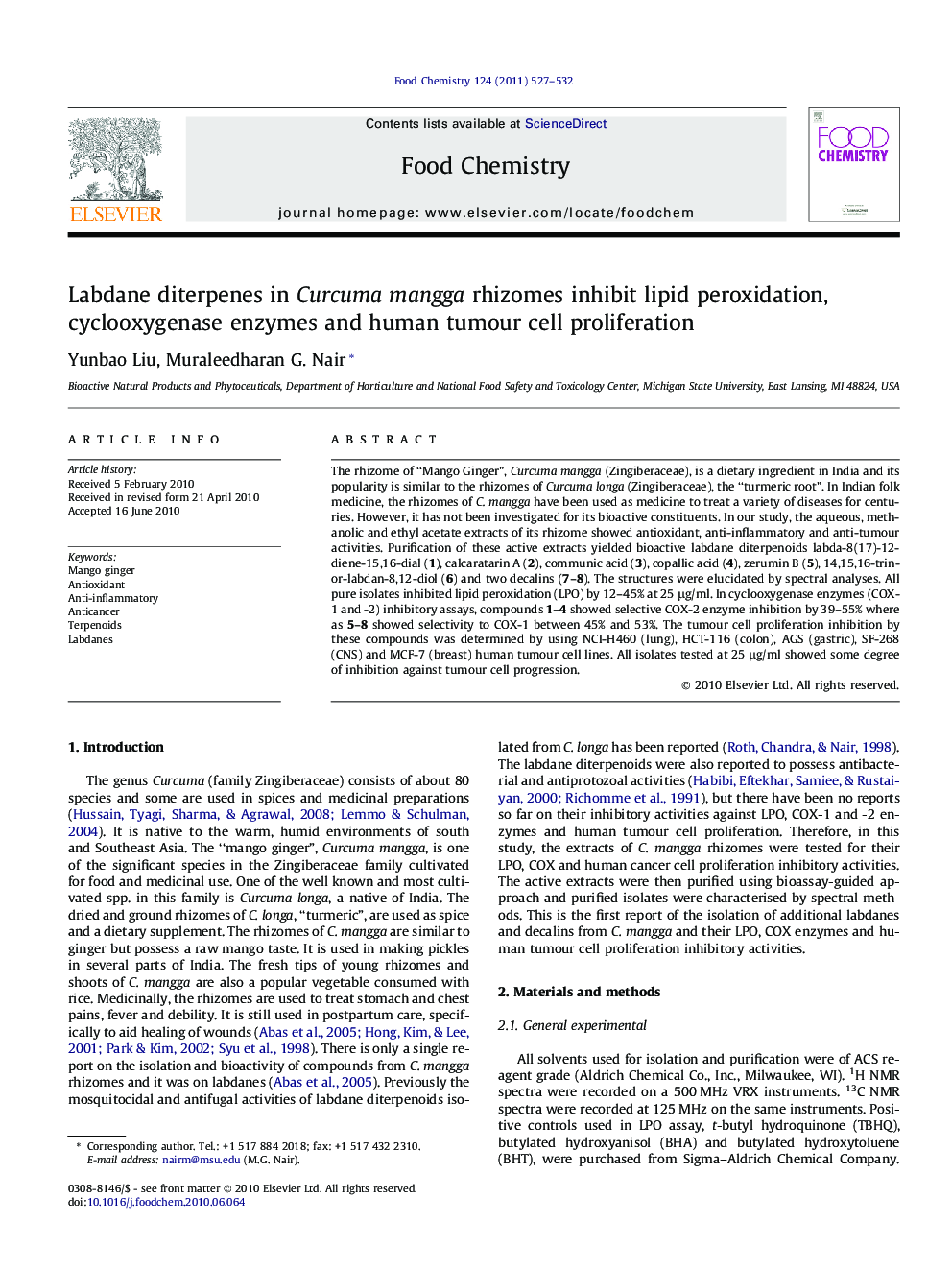| Article ID | Journal | Published Year | Pages | File Type |
|---|---|---|---|---|
| 1184954 | Food Chemistry | 2011 | 6 Pages |
The rhizome of “Mango Ginger”, Curcuma mangga (Zingiberaceae), is a dietary ingredient in India and its popularity is similar to the rhizomes of Curcuma longa (Zingiberaceae), the “turmeric root”. In Indian folk medicine, the rhizomes of C. mangga have been used as medicine to treat a variety of diseases for centuries. However, it has not been investigated for its bioactive constituents. In our study, the aqueous, methanolic and ethyl acetate extracts of its rhizome showed antioxidant, anti-inflammatory and anti-tumour activities. Purification of these active extracts yielded bioactive labdane diterpenoids labda-8(17)-12-diene-15,16-dial (1), calcaratarin A (2), communic acid (3), copallic acid (4), zerumin B (5), 14,15,16-trinor-labdan-8,12-diol (6) and two decalins (7–8). The structures were elucidated by spectral analyses. All pure isolates inhibited lipid peroxidation (LPO) by 12–45% at 25 μg/ml. In cyclooxygenase enzymes (COX-1 and -2) inhibitory assays, compounds 1–4 showed selective COX-2 enzyme inhibition by 39–55% where as 5–8 showed selectivity to COX-1 between 45% and 53%. The tumour cell proliferation inhibition by these compounds was determined by using NCI-H460 (lung), HCT-116 (colon), AGS (gastric), SF-268 (CNS) and MCF-7 (breast) human tumour cell lines. All isolates tested at 25 μg/ml showed some degree of inhibition against tumour cell progression.
